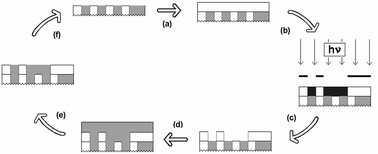Green chemistry in the microelectronics industry
Abstract
Microelectronic devices and materials now represent one of the largest manufacturing sectors in the world. Like many large industries, growth has been accompanied by increasing concerns regarding environmental emissions and impact. One challenge for the high end of the market is the identification of alternative process technologies that are not just “greener” but provide compelling technical advantages that could foster adaptation. This review examines a few opportunities where this is possible, including the use of supercritical fluids such as carbon dioxide in advanced device fabrication. The implementation of more acceptable materials in commodity markets, including lead free solder for printed wiring boards, is also discussed.


 Please wait while we load your content...
Please wait while we load your content...